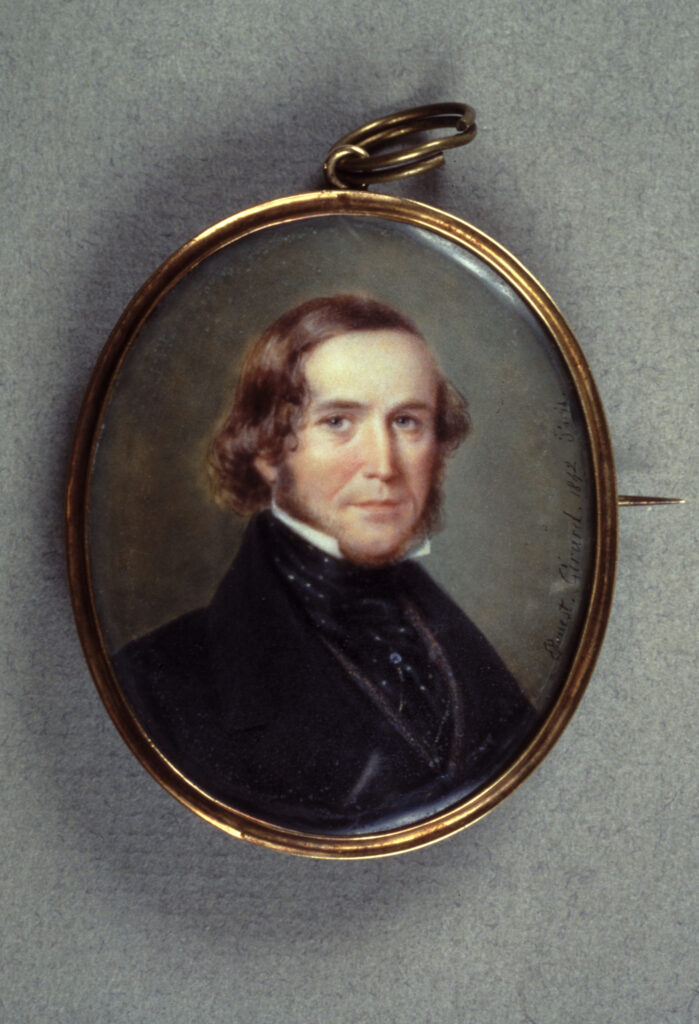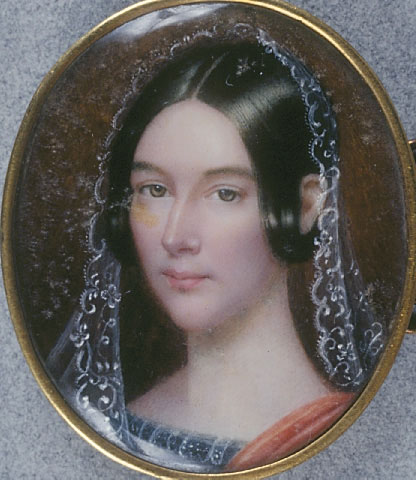The distinguished scholar-diplomat William Brown Hodgson became a mainstay in the cultural and intellectual life of Savannah following his marriage in 1842 to Margaret Telfair, the youngest daughter of Georgia governor Edward Telfair.
Education and Diplomatic Career
Born on September 1, 1801, in Georgetown, D.C., Hodgson was left fatherless as a young boy. He never attended college, and his formal education was limited to studies in Georgetown, principally under the Reverend James Carnahan, a future president of the College of New Jersey (later Princeton University). While in Georgetown, young Hodgson developed a friendship with local lawyer Francis Scott Key. He had an unusual facility for foreign languages and ultimately would master thirteen of them, including Hebrew and Sanskrit. Although he had never studied at Princeton, the college conferred upon him an honorary degree in 1824.

As a young man Hodgson attracted the attention of Henry Clay, then a member of the U.S. Congress, who secured for him a position in the U.S. State Department. When Clay became secretary of state under U.S. president John Quincy Adams, he assigned Hodgson to the Barbary States of northern Africa to receive further linguistic training and to assist the consul general at Algiers in Algeria. It was there that Hodgson began his lifelong fascination with the Berbers and their ancient language. He was sent to Constantinople, Turkey, in the spring of 1831 with instructions to negotiate a ratified treaty with the Turks. There he gained the respect of the American chargé d’affaires, who requested that Hodgson be assigned to his legation as dragoman, or official interpreter. Hodgson assumed this position in the summer of 1832.
In 1834 Hodgson was sent to Egypt to ascertain the practicability of carrying on commercial relations with that country. In 1836 he served in London, England, and the following year he was at a desk in Washington, D.C. Soon thereafter he was dispatched on a mission to Lima, Peru, to deliver a treaty of peace, friendship, and commerce with the new Peru-Bolivian Confederation. After another stint in the nation’s capital, Hodgson was appointed in 1841 to his first consular post—as consul general in Tunis, Tunisia—by U.S. secretary of state Daniel Webster.
In Paris, France, on his way to Tunis, Hodgson met and fell in love with Savannah native Margaret Telfair, a member of the prominent Telfair family, who was traveling on the European continent with her sisters. Telfair agreed to marry him on the condition that he resign his post in Tunis. Hodgson accepted her terms, and they were married in July 1842 at St. George’s Church in London.
Scholarship
Upon their return to America, Hodgson and his bride settled into the Telfair residence at Savannah’s St. James Square (later Telfair Square). Hodgson took over the supervision of the Telfair plantations and soon became caught up in the intellectual life of the city. He turned his attention to the scholarly work that had first captured his interest as a young man and joined the Georgia Historical Society, of which he was elected a curator in 1845.
Hodgson’s scholarly work included studies in the physical sciences, among them an 1843 paper to the National Institute in Washington on the organic remains and geology of the Georgia coast. He presented a second paper to this organization entitled “The Foulahs of Central Africa and the African Slave Trade” and in 1844 published his “Notes on Northern Africa, the Sahara and Soudan.” Other works followed on equally exotic subjects. When Sir Charles Lyell, the eminent British geologist, visited Savannah in December 1845, Hodgson accompanied him on an excursion to Skidaway Island (which Lyell later described in A Second Visit to the United States of North America).
Hodgson based much of his ethnological and linguistic scholarship on his contacts with the enslaved people of the Telfair plantations. He found a great deal of ethnic diversity within this population and could distinguish among the Mandingo, Ebo, Gullah, Fula (according to Hodgson, a powerful, warlike nation), and people from Guinea. Through his knowledge of African languages, he was able to converse with the Africans in their native tongues.
Hodgson received many honors during his lifetime. He was a member of the American Philosophical Society and the American Oriental Society and was elected to membership in the ethnological societies of New York City, London, and Paris, as well as to the geographical societies of London and Paris. He attended the Paris Exposition of 1855 as commissioner from the State of Georgia and was one of the first Americans to be awarded the French Legion of Honor. Princeton University awarded him an honorary doctor of laws degree in the 1850s.

Hodgson died on June 26, 1871, while visiting New York City. He was buried in the Telfair family crypt at Bonaventure Cemetery in Savannah.
The respect and affection in which Margaret Telfair Hodgson held the man to whom she had been married for almost thirty years was evidenced by her decision to construct, in his memory, a new headquarters and library for the Georgia Historical Society. Hodgson Hall was dedicated on February 14, 1876, the thirty-seventh anniversary of the society’s founding. During the ceremony, Carl Brandt’s portrait of Hodgson, to be hung in the new hall, was unveiled, and General Henry Rootes Jackson delivered a stirring oration in praise of the gifted scholar-diplomat.












